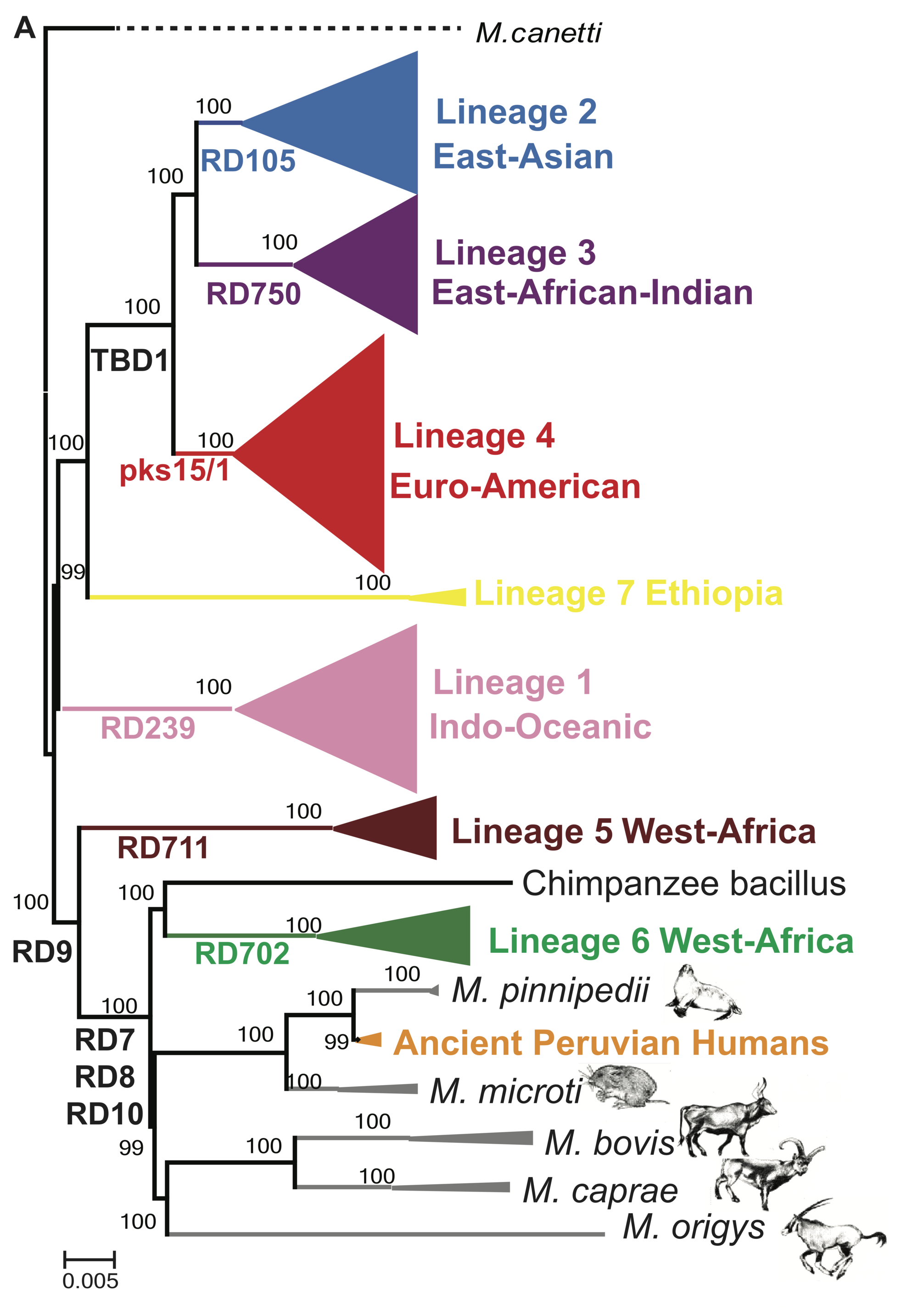The Global Population Structure of the MTBC

Animal-adapted and extinct MTBC Lineages
In addition to the seven human-adapted lineages, the MTBC also includes several lineages adapted to different wild and domestic animal species. We recently discovered a novel MTBC variant in a wild chimpanzee from Cote d’Ivoire as well as an extinct MTBC variant in pre-Columbian human skeletons from Peru.
Conserved Human T Cell Epitopes
Our previous work showed that, in contrast to most other human pathogens which evade host immune responses by accumulating antigenic variation, human T cell antigens in the MTBC are highly conserved. This suggests that some of the host immune responses in TB benefit the bacteria, e.g. by promoting lung damage in the patient, leading to increased transmission. These findings have important implications for the development of new TB diagnostics and vaccines.
Generalists and Specialists in the MTBC
Recently, we showed that the main MTBC lineages can be further divided into sub-lineages, which differ in their epidemiological characteristics. For example, among the 10 sub-lineages identified in Lineage 4, some behave as specialists and are limited to specific geographical areas, while others are generalists occurring on all continents.
Ongoing Research
Our ongoing work explores the co-evolution between the MTBC and different human populations, how MTBC diversity interacts with human genetic variation, and how this interaction reflects in experimental, clinical and epidemiological phenotypes.